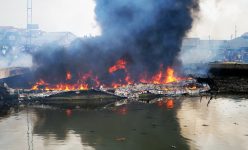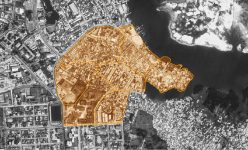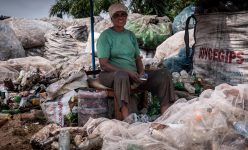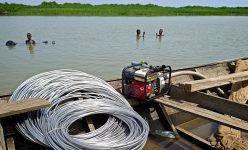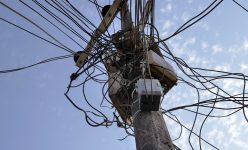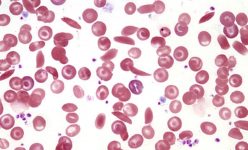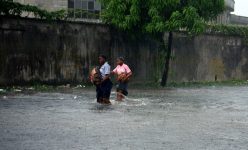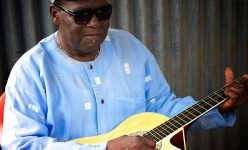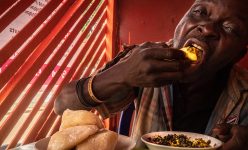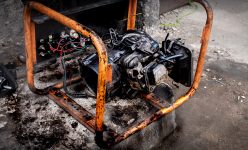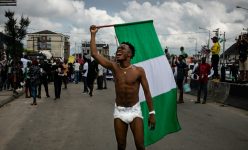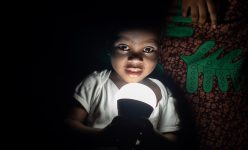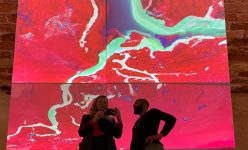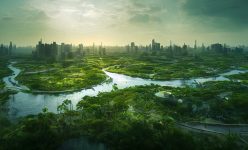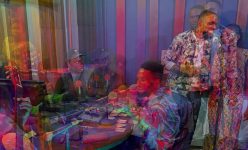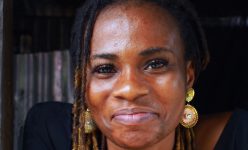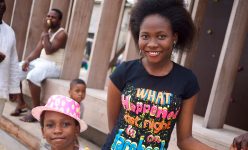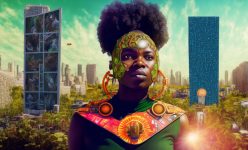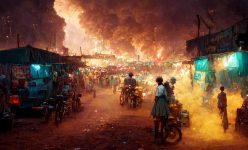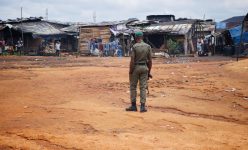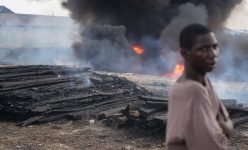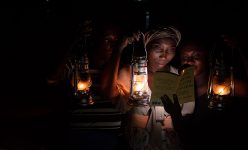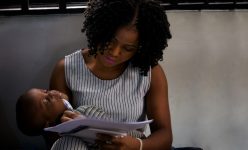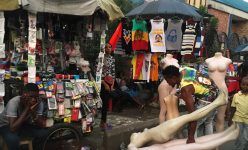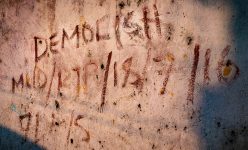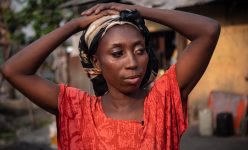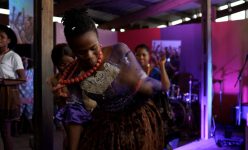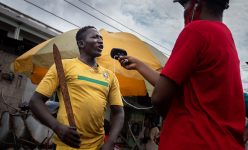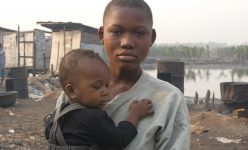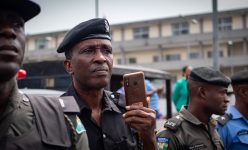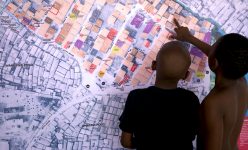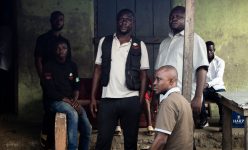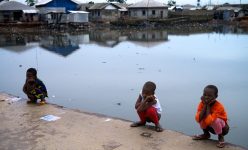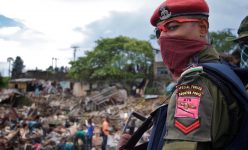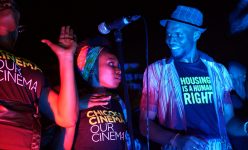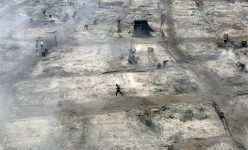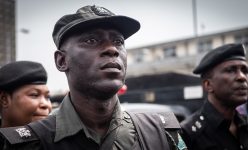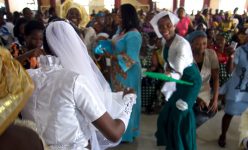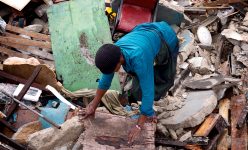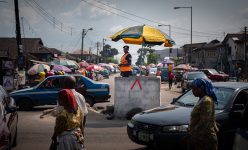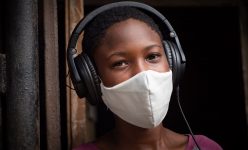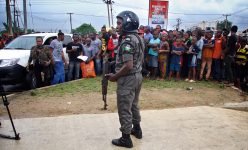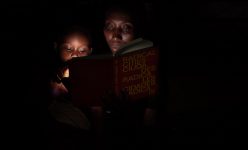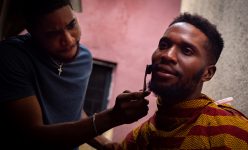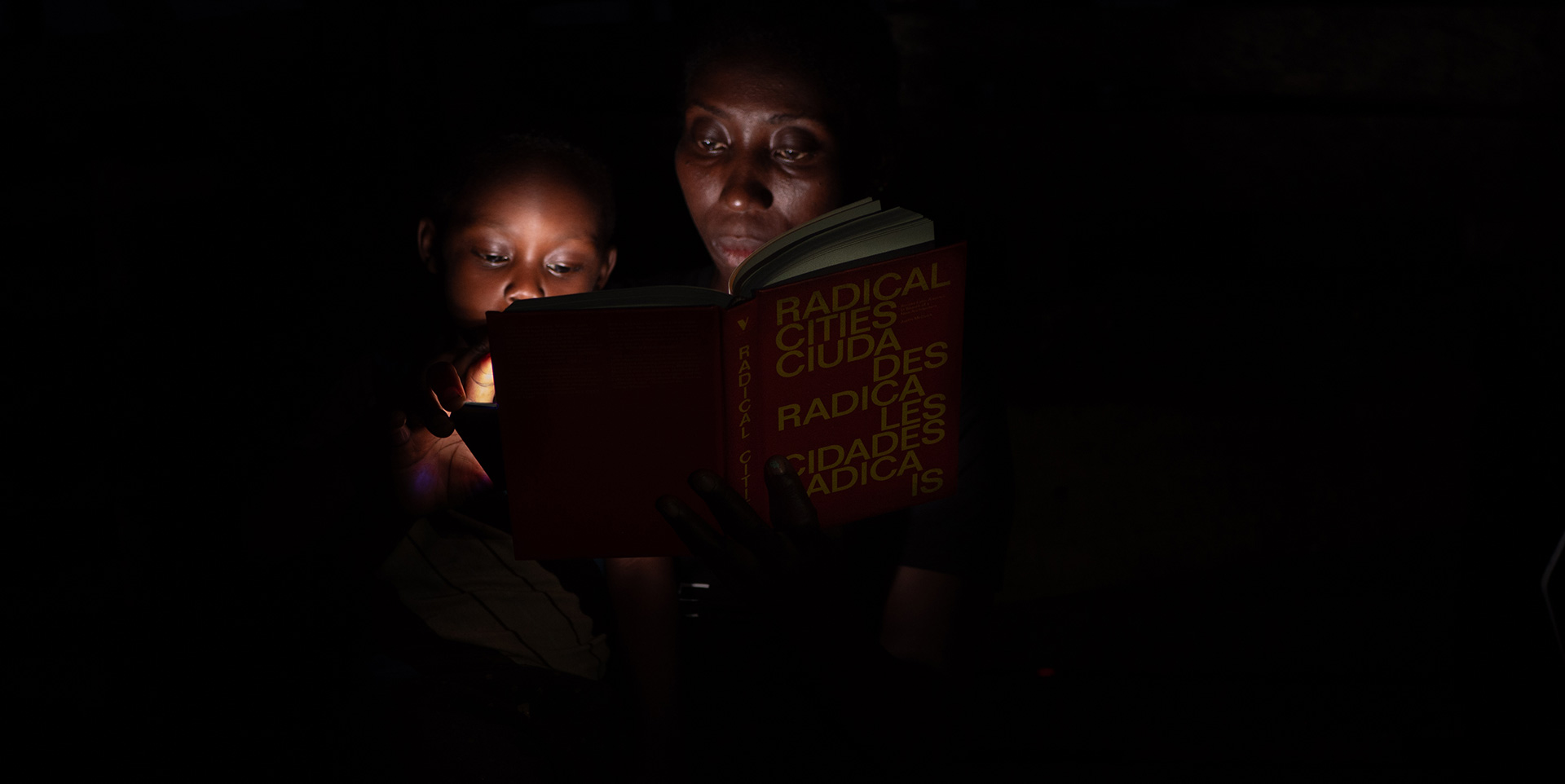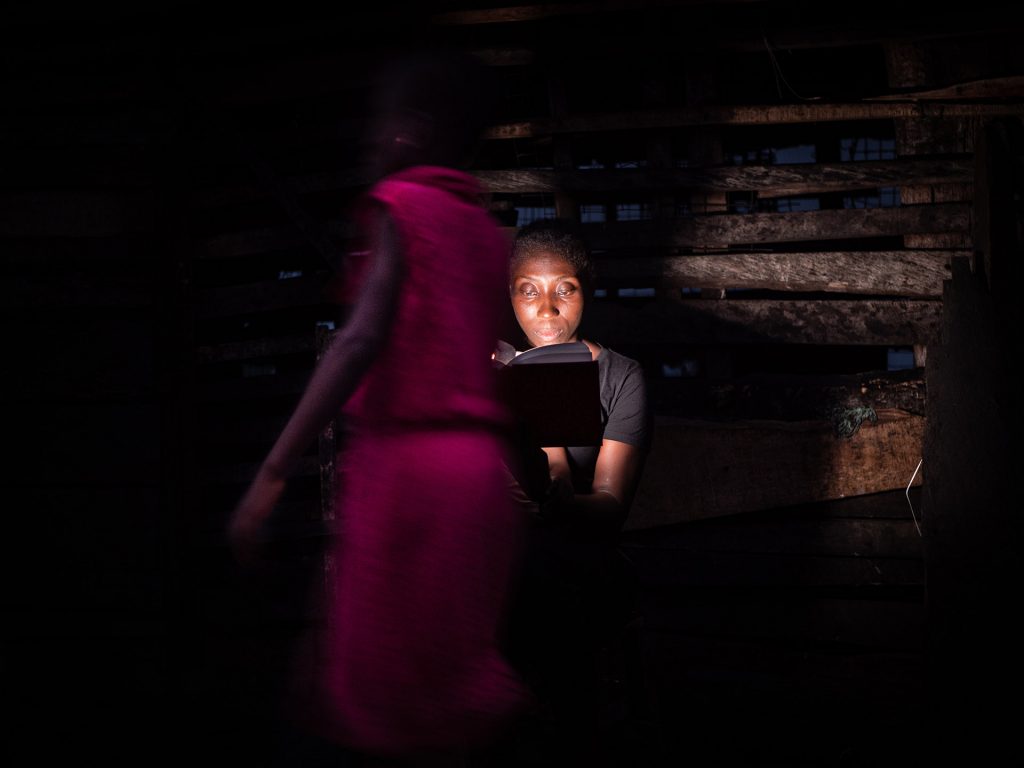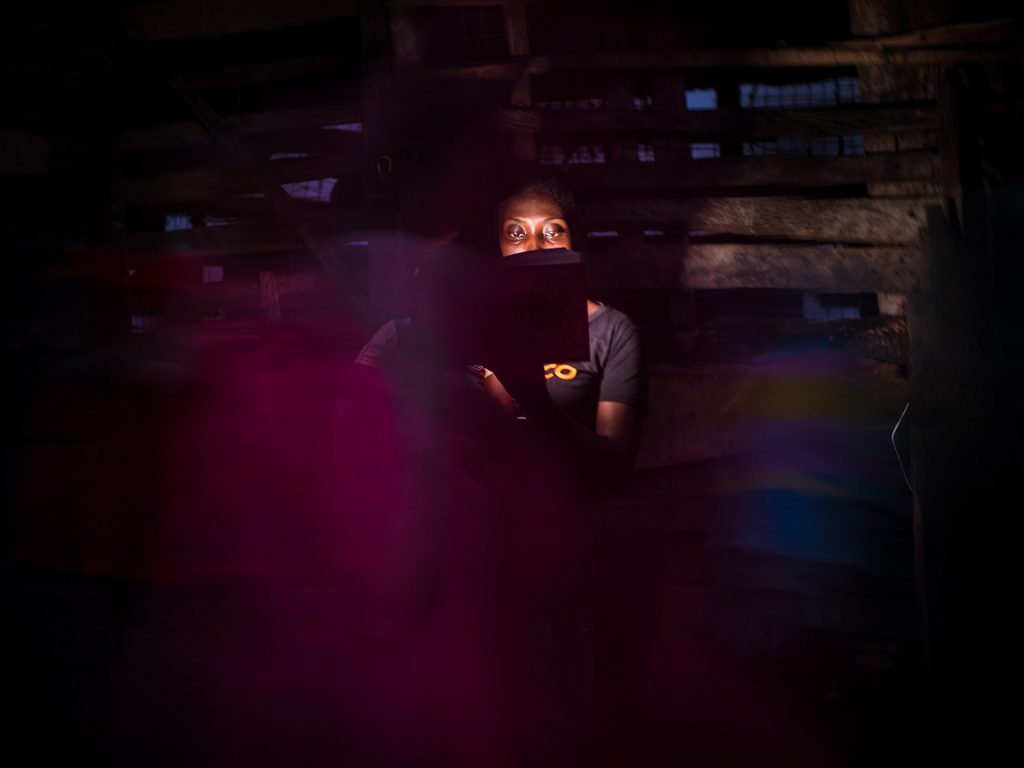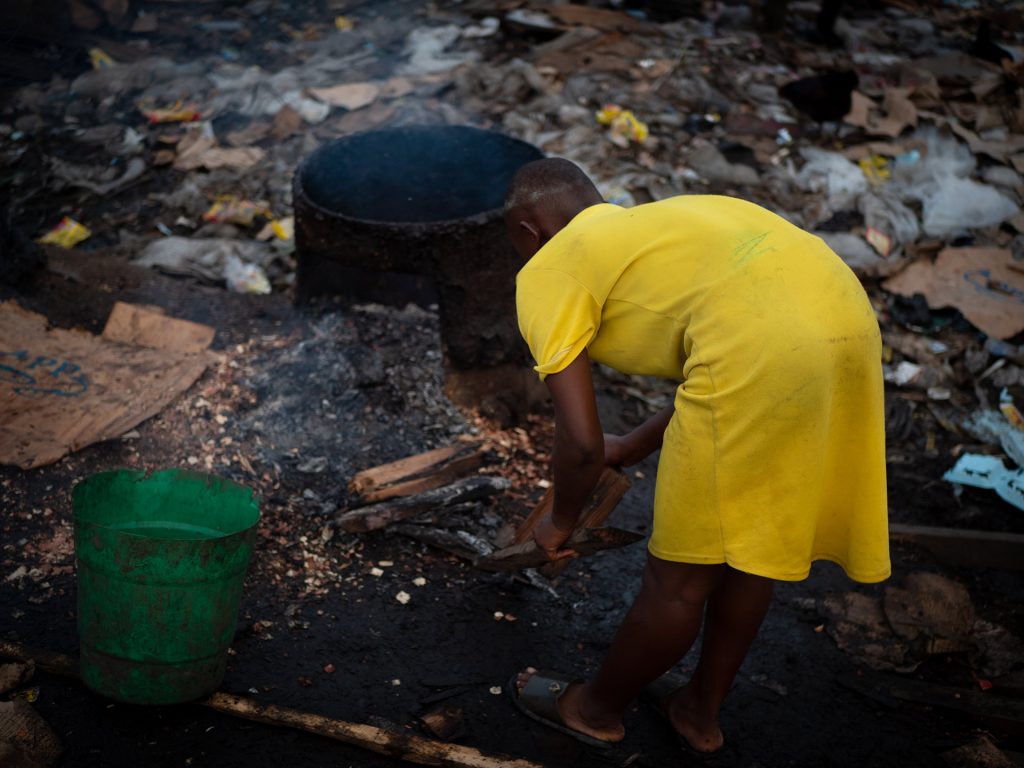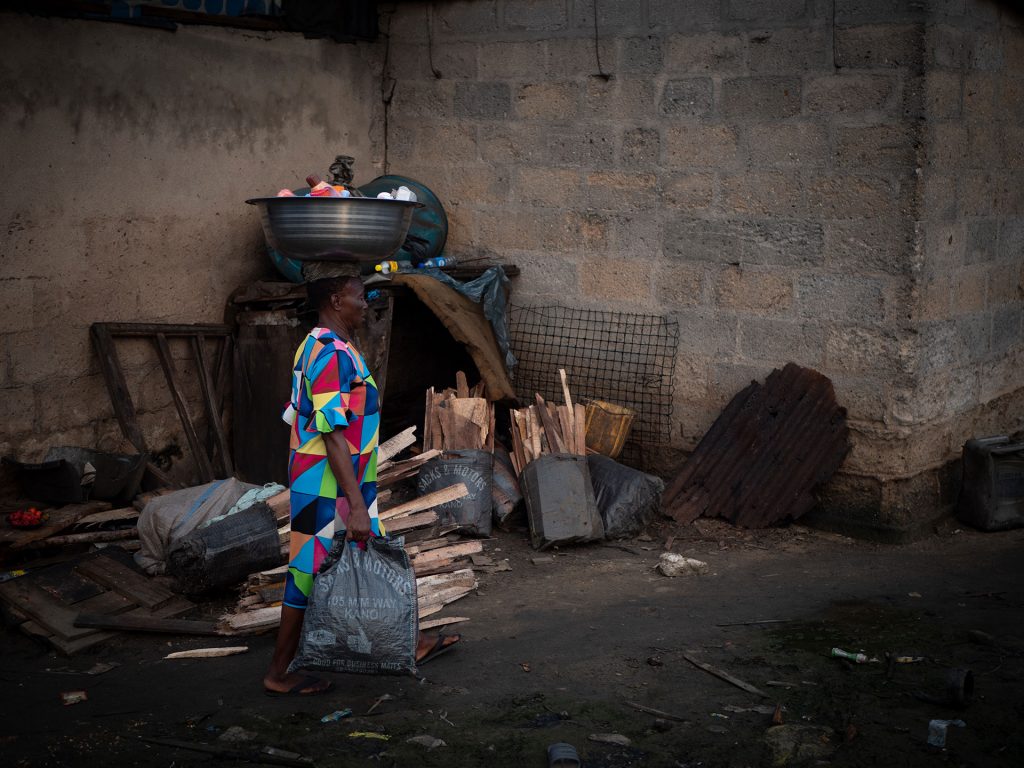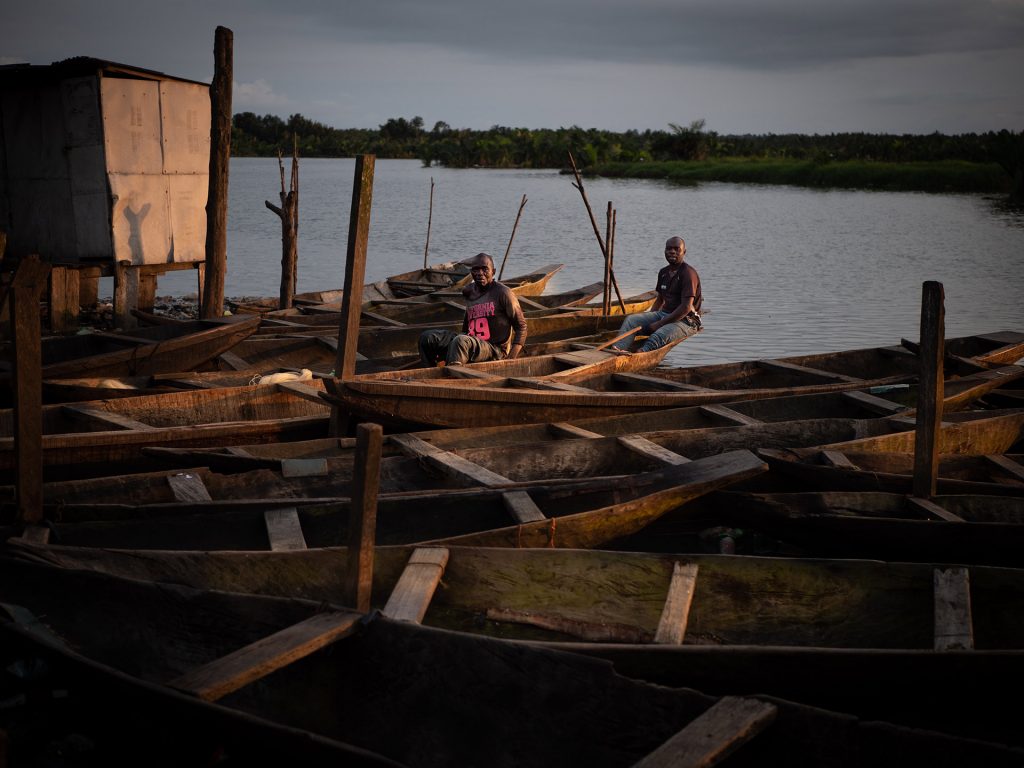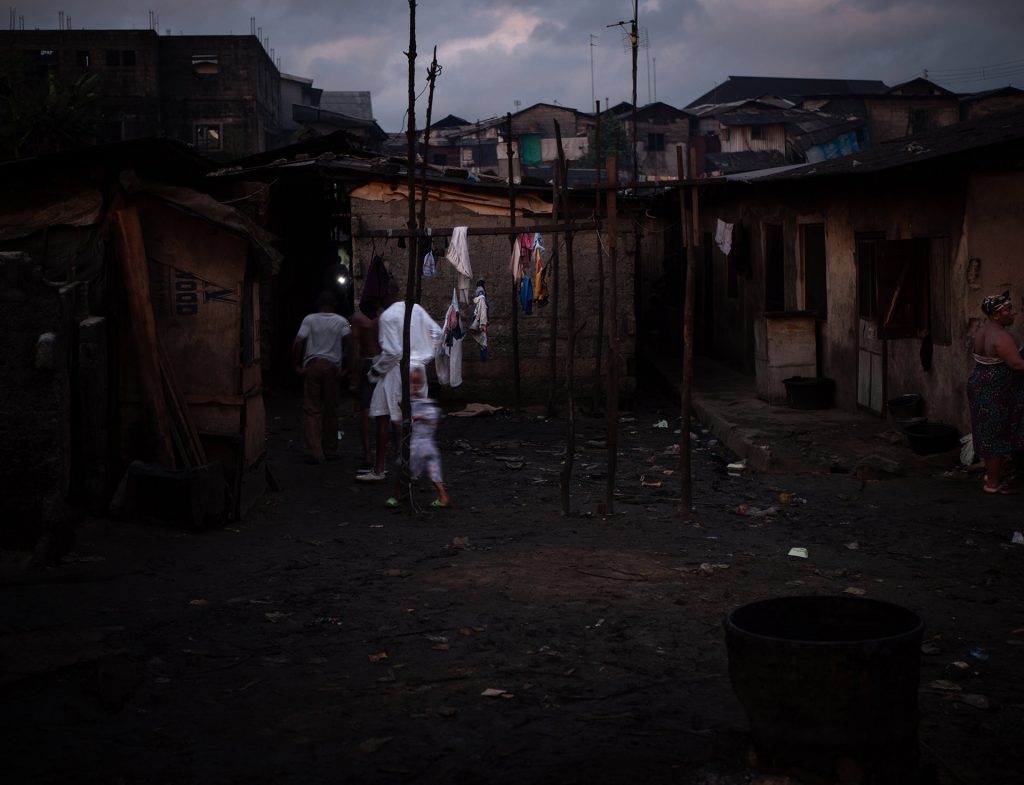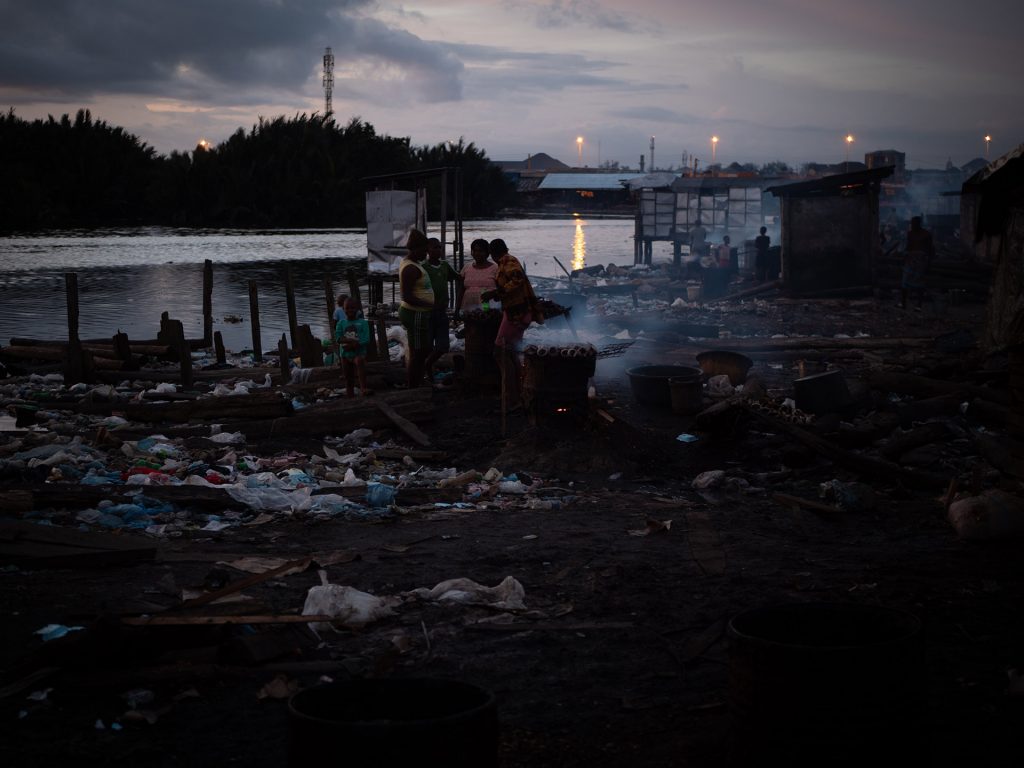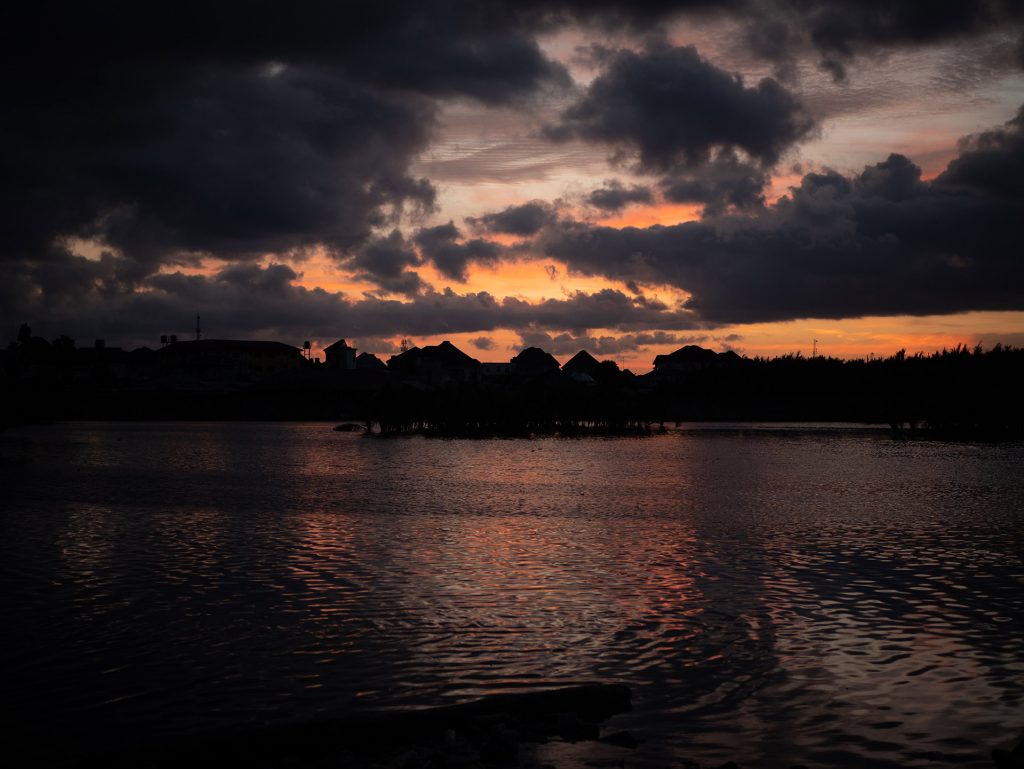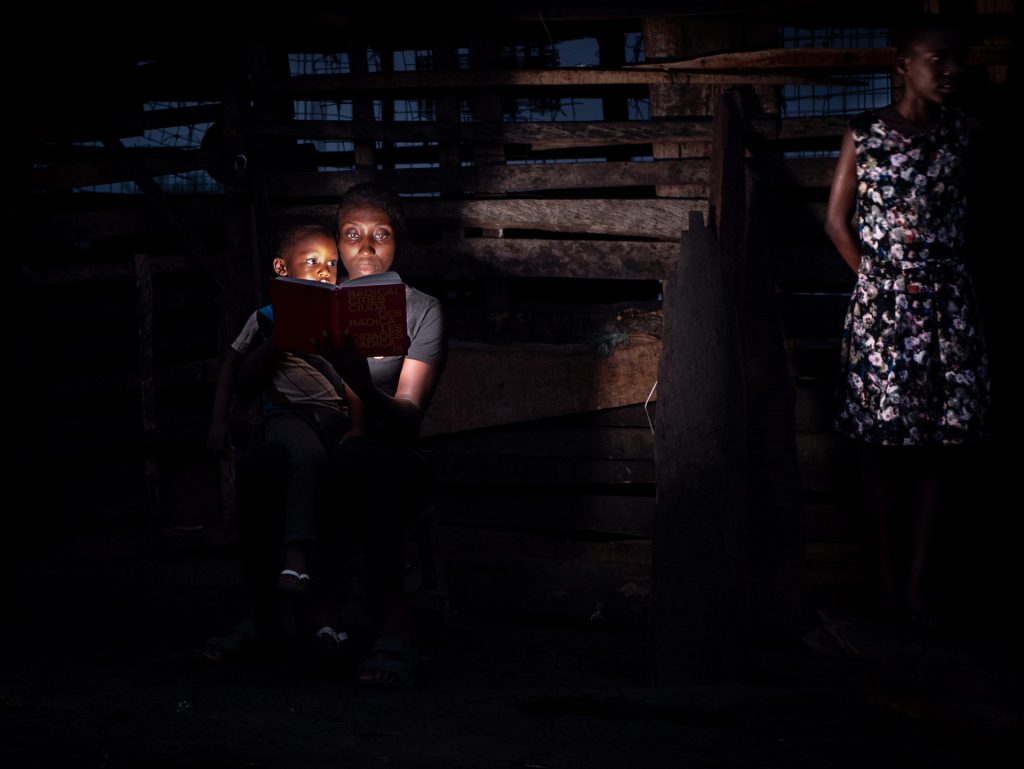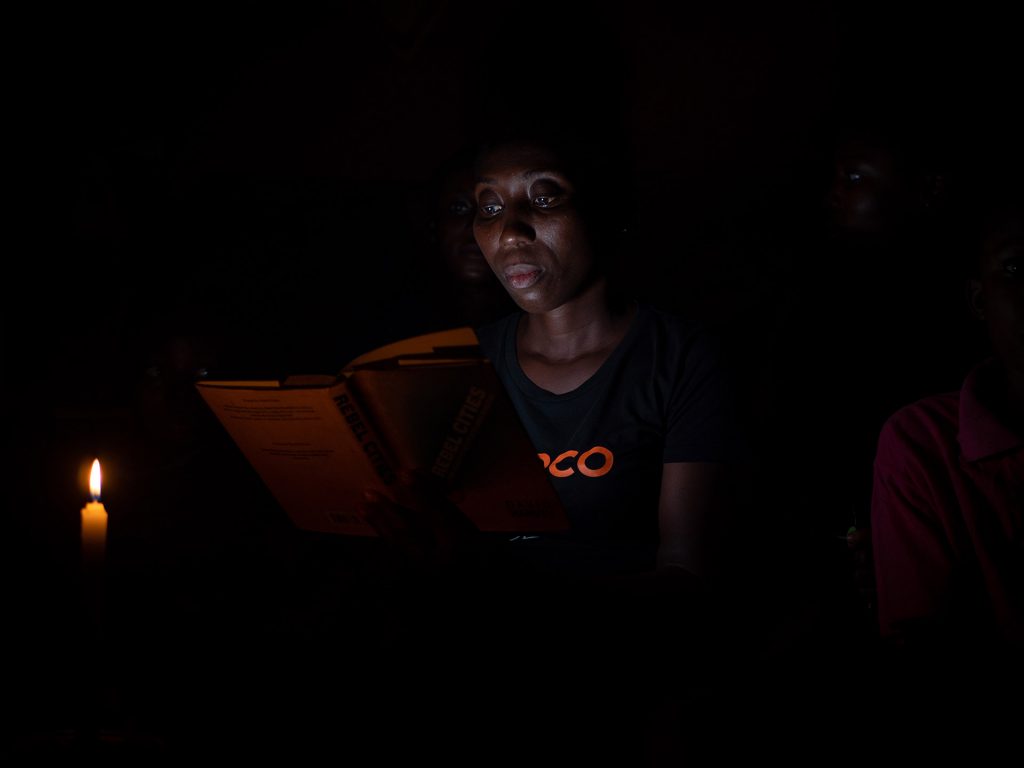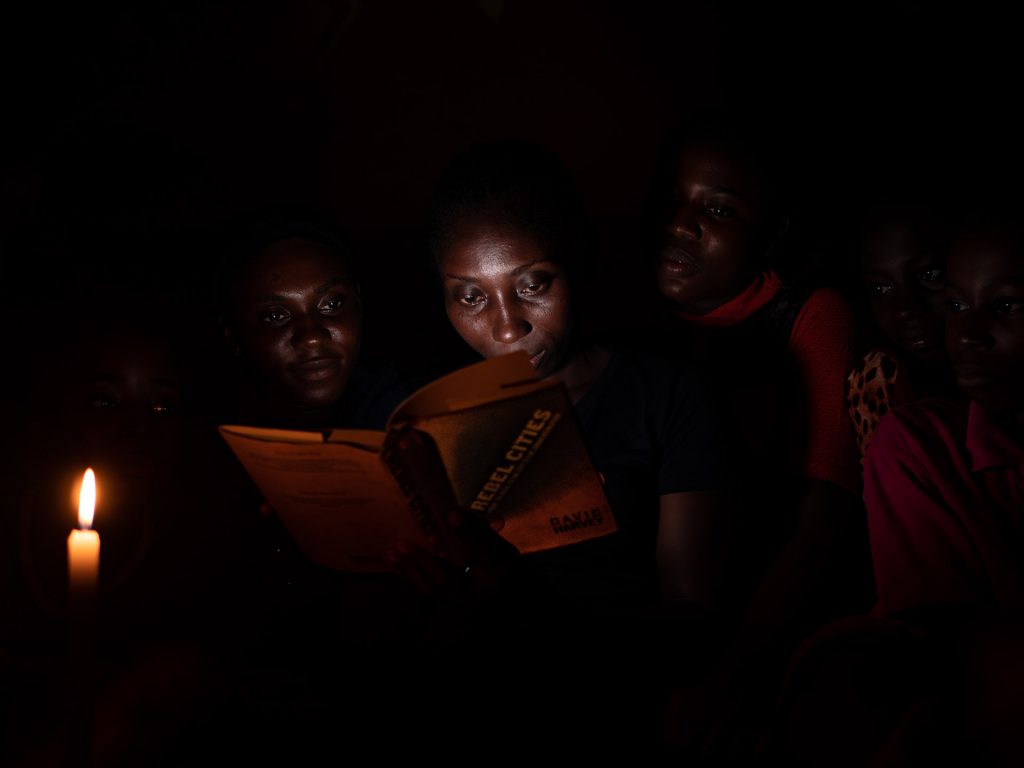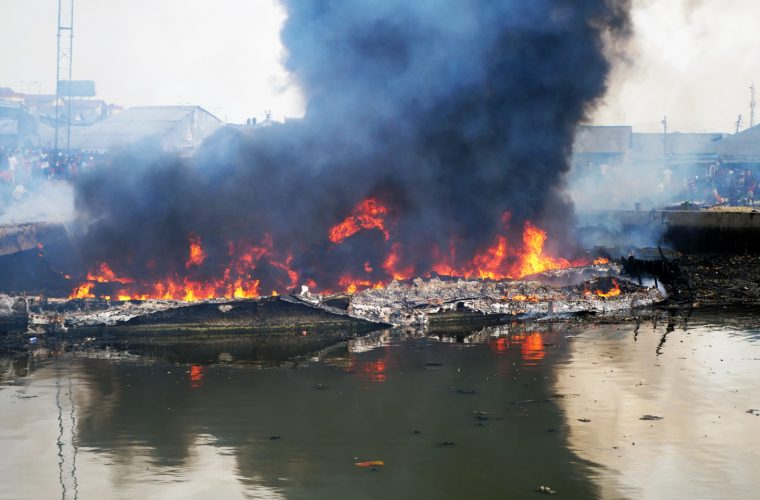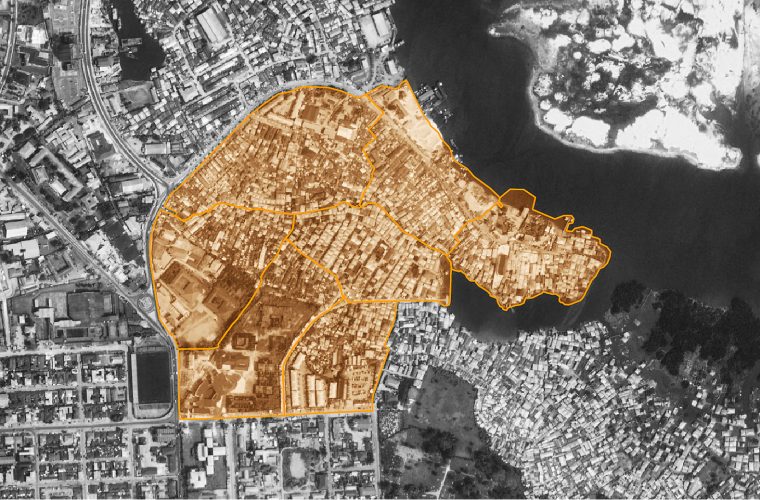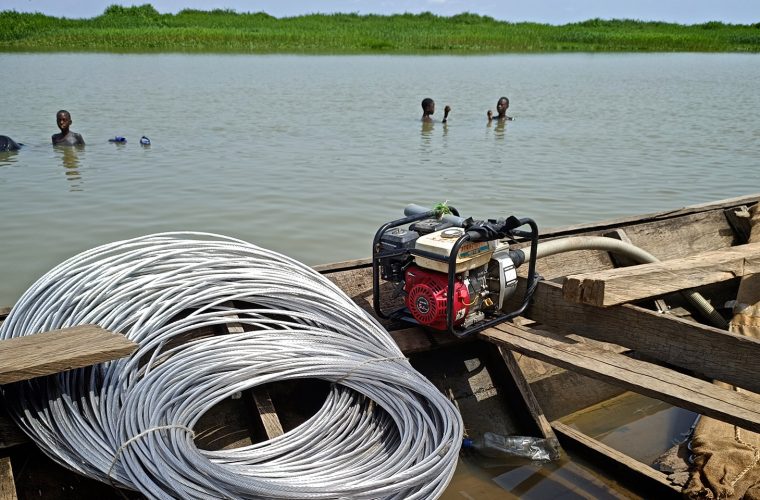Reading in the Dark PT.2
1st October, 2020, the headline that grips the men gathered in the lean-to by the canoe moorings reads: ‘Madrid Confirm that Hazard is Injured Again!’
One of the men, shirtless in canvas shorts, is pulling a large needle through his fishing net bunched and hung over the beam under the tin roof. Another four or five are seated on a bench made from rough planks and a few more sit on upturned plastic buckets opposite them across a draughts board. The board is a dashing white and turquoise check, shot across by a single arterial red diagonal. The plastic counters are slammed down with elaborate flourish. This is a spectator sport and excited conversation swings between the local state of play and important international news being read out about the Premiere League in the day’s vanishing light.
The fires beneath the fish smokeries are tended. My brother stokes one; a young girl with a shaved head, strong arms and lemon-yellow dress pushes wood into another. People are opening cartons of frozen fish and chipping away at the ice beside the flames.
Children play hopscotch and flick-the-lid with bottle tops and chase each other between the rows of washing line poles.
Small stalls set out on tables in front of rooms narrow the alley to a squeeze with cup-sized piles of peppers and tomatoes, onions, sweet potatoes and dried fish. Narrowed elsewhere, threateningly, by red-eyed young men wrapped up in smoke of their own making.
There is nothing apparent this evening that would indicate we are living through an accelerating pandemic. No masks; no public washing of hands. Gathered groups are perhaps larger and denser, with more people home and fewer working. How calculations of risk might have changed cannot be read on people’s faces and the epidemiologist would find no data from this hood to decipher. People still catch fever. If a person dies here, the cause is inscrutable.
During the lockdown, it was food rather than phones that were stolen. What the long term impacts of this virus might be here are difficult to imagine. The long term is difficult to imagine. For decades we have lived in well-established short-termness: makeshift; making-do; day-to-day; hand-to-mouth. For decades we have lived with poorly controlled infectious disease and unexplained death.
The headline the men playing drafts that evening didn’t mention reads: ‘President Trump Tests Positive!’ In days that follow, one can read of the experimental treatments he received and his oxygen saturation levels.
Through these days, as through the days before, I read my novels and report our news. Those stories which matter to us and those, which through an exercise of imagination,
I can make matter to us.
Reading and Writing: Martha Ereba
Styling: Martha Ereba
Editing and Design: CMAP
Conceived and Produced: CMAP and Isaac Harry
Books in this series:
Radical Cities: Across Latin America in Search of a New Architecture, Justin McGuirk
Rebel Cities: From the Right to the City to the Urban Revolution, David Harvey
Behind the Beautiful Forevers, Life, Death, and Hope in a Mumbai Undercity, Katherine Boo
The Death and Life of Great American Cities, Jane Jacobs In the Light of What We Know, Zia Haider Rahman
Read Part 1: here

